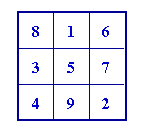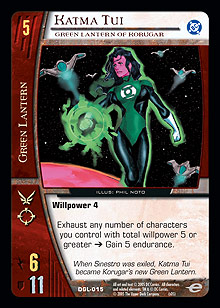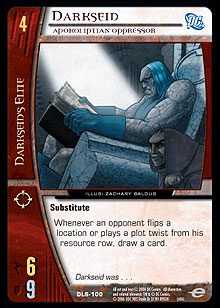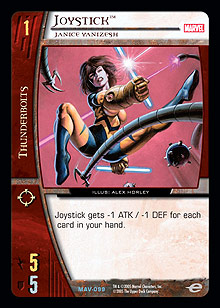“11:15, restate my assumptions: One, mathematics is the language of nature. Two, everything around us can be represented and understood through numbers. Three, if you graph these numbers, patterns emerge. Therefore, there are patterns everywhere in nature.”
—Maximillian Cohen, Pi
Numbers in Nature
I am a man of science. Our understanding of the world hinges on the basic assumption that there is a logical flow in nature. The sun sets, the sun rises. There are patterns in nature that can be examined to understand the complexity of systems. Numbers are everywhere. Many of you have heard of mathematical patterns and the methodical ways that systems tend to operate in nature. We have the golden ratio, which can be found in common geometric shapes but offers insight into very complex math solutions. For example, the golden ratio has surprising connections with continued fractions and the Euclidean algorithm for computing the greatest common division of two integers.
Some of you may have heard of magical squares. A magic square is an arrangement of the numbers from 1 to n2 (n squared) in an n by n matrix, with each number occurring exactly once and arranged such that the sum of the entries of any row, any column, or any main diagonal is the same. The simplest magic square is the 1x1 magic square, whose only entry is the number 1.

The next simplest is the 3x3 magic square:

Numbers are everywhere in nature. They form patterns and can guide us to the promised land—if we can crack the code. We spent some of our early sessions talking about the use of numbers in this game. As with any system, Vs. System operates like nature. There is a gentle dance between order and chaos, predictability and statistical improbability, skill and chance. Like the patterns that emerge in nature, there may be some mathematical insights useful in the courtship of our lady luck. We have devised a statistical analysis of hitting a certain card by a given turn, but in this session, we are going to take a step slightly closer to the edge.
Neitzsche stated that it may not serve you well to stare long into the abyss, for the abyss may stare back into you. Chasing patterns and discovering order in massively complex systems may leave a person broken and feeding pigeons, but it may also be your chance to challenge the darkness and walk away a better player.
The Formula
“Restate my assumptions: One, mathematics is the language of nature. Two, everything around us can be represented and understood through numbers. Three, if you graph the numbers of any system, patterns emerge. Therefore, there are patterns everywhere in nature. Evidence: The cycling of disease epidemics, the wax and wane of caribou populations, sun spot cycles, the rise and fall of the Nile. So, what about the stock market? The universe of numbers that represents the global economy. Millions of hands at work, billions of minds. A vast network, screaming with life. An organism. A natural organism. My hypothesis: Within the stock market, there is a pattern as well . . . right in front of me . . . hiding behind the numbers. Always has been.”
—Max, Pi
I don’t know much about the stock market, but I play a lot of cards. What about Vs. System? Numbers of cards in a deck, number of resources in a row, recruit costs, ATK values, stun damage, endurance totals . . . numbers are everywhere. Vs. System is a vast network. An organism. A natural organism. My hypothesis: within Vs. System, there is a pattern as well . . . right in front of us . . . hiding behind all of those numbers.
To understand the complexity of this game, one can only hope to break apart various pieces. Through careful analysis and dissection, a player might derive greater understanding of key themes and aspects. After much study and research, I think I may have developed a tool for understanding a character’s ATK and DEF value, its relationship to an exponentially developing curve, and the combined role of a character’s cost and its modifier in relation to endurance.
Prior articles have looked into the importance of deck construction around a win condition. The following mathematical discovery will allow a player the opportunity to evaluate the relative value of a character card to the overall win condition. Beginning players struggle to select the best cards, but the best cards make the best decks; players who identify and play the best cards and decks usually achieve the best outcomes. Therefore, card evaluation is an essential part of achieving optimal outcomes.
Understanding the Math: Matching Stats with the Win Condition
In a vacuum, what would you consider to be the best defensive character card? What holds the title as best offensive character card? Card evaluation is very complex because of the sheer number of factors involved in such an analysis. At first, it is useful to understand the nature of statistics at each drop. Most playable 1-drops have 1 ATK / 1 DEF stats, 2-drops have about 3 ATK / 3 DEF, 3-drops have 5 ATK / 5 DEF, 4-drops have 7 ATK / 7 DEF, 5-drops have 9 ATK / 9 DEF, 6-drops have 12 ATK / 12 DEF, and 7-drops have 16 ATK / 16 DEF. Each character is tempered according to its ability. Therefore, you often find a slightly underpowered drop with a great ability. Occasionally you’ll find a character card with good to above-average stats and a great ability; those cards are among the best in the game. Think about staple character cards in this game: Garth ◊ Tempest has an outstanding ability and average statistics for a 5-drop, Bastion sports average statistics but brings a very useful ability to a team that could capitalize on the use of extra characters, and the 7-drop Magneto, Master of Magnetism sets the standard for statistics combined with game-altering abilities.
Cheating the Curve
 Great statistics and great abilities fueled the best decks. As sets were developed, characters occasionally broke the mold to “cheat” in favor of offense or defense. In the beginning, bomb rare cards like Sabertooth, Feral Rage demonstrated how “cheating” the typical curve paid huge dividends. Players eventually experienced the advent of cheaters across multiple teams. We got to use insane cheaters like Katma Tui, who almost jumped the character curve with her above-average DEF. There were additional cards made with tremendous ATK values. The art became finding characters with outstanding printed values and very low drawbacks. Reaper is a 4-drop with 12 ATK, but the drawback was too expensive for the card to see much play. There was a 4-cost character in the Green Lantern Corps set (Mouse Trap) with 12 DEF, but 0 ATK and no team affiliation limited its utility.
Great statistics and great abilities fueled the best decks. As sets were developed, characters occasionally broke the mold to “cheat” in favor of offense or defense. In the beginning, bomb rare cards like Sabertooth, Feral Rage demonstrated how “cheating” the typical curve paid huge dividends. Players eventually experienced the advent of cheaters across multiple teams. We got to use insane cheaters like Katma Tui, who almost jumped the character curve with her above-average DEF. There were additional cards made with tremendous ATK values. The art became finding characters with outstanding printed values and very low drawbacks. Reaper is a 4-drop with 12 ATK, but the drawback was too expensive for the card to see much play. There was a 4-cost character in the Green Lantern Corps set (Mouse Trap) with 12 DEF, but 0 ATK and no team affiliation limited its utility.
Occasionally, all-star cards emerge with abusive stats and key abilities. They thrive because of their team affiliations or synergies with other cards. As the pool of cards available for the game is increased, the chances of finding curve-jumping characters with great abilities are also increased. R&D has toyed with variations on the typical stats for a drop by adjusting the total points available at a given cost. If 7 ATK and 7 DEF is average for a 4-drop, then some characters are adjusted to an 8 ATK / 6 DEF body. Some characters have slipped to an even more extreme combo, with 9 ATK / 5 DEF bodies or the aforementioned 8 ATK / 11 DEF frames. I tend to like those characters. They offer a player the chance to take a big gamble with a high potential payoff when using a particularly aggressive or defensive deck. Characters with extreme stats can facilitate the goals of a deck. If you had a defensive strategy, then you might certainly desire an 8 ATK / 11 DEF 5-drop over the typical 9 ATK / 9 DEF frame. Further, a character with a 9 ATK / 8 DEF body or 10 ATK / 7 DEF body would be avoided because of the conflict with the goals and operation of the deck.
Most players would consider this type of analysis rudimentary. Yet I have played a number of games in which both players made great plays, dropped very similar characters, and hit good draws, but one player gained a subtle advantage over time with particularly good character stats that translate into some form of board or hand advantage. If you are playing a 9 ATK / 10 DEF 5-drop against a 9 ATK / 9 DEF 5-drop, the additional DEF can become quite a problem. The player with the smaller stat has to use an additional card to surmount the opposing drop. Eventually, this can lead to a sizeable advantage and victory. Try playing some of your next Sealed Pack matches with statistically superior characters and you will experience this advantage over players packing more average characters.
Amp the Average
 My favorite characters in the game break not only the statistical average for a drop in terms of ATK or DEF, but also cheat the curve by getting some additional points. The new Darkseid, Apokoliptian Oppressor has a body that gets some free points. It brings fifteen total points to the table, while the average 4-drop only gets fourteen. I like characters like Malvolio that really break the average. His 4 ATK / 10 DEF frame offers a defensive edge against almost every 4-cost character you are likely to face, but Malvolio pays for this defensive edge with the inability to stun most good 3-drops. Unlike the Lord of the Green Flame, Darkseid offers a player the chance to compete with equivalent drops while netting advantage from his larger DEF. It is interesting to pack characters that allow you to push multiple types of advantage. In the case of Darkseid, you get to push the defensive edge while still having a shot at some sort of reasonable attack.
My favorite characters in the game break not only the statistical average for a drop in terms of ATK or DEF, but also cheat the curve by getting some additional points. The new Darkseid, Apokoliptian Oppressor has a body that gets some free points. It brings fifteen total points to the table, while the average 4-drop only gets fourteen. I like characters like Malvolio that really break the average. His 4 ATK / 10 DEF frame offers a defensive edge against almost every 4-cost character you are likely to face, but Malvolio pays for this defensive edge with the inability to stun most good 3-drops. Unlike the Lord of the Green Flame, Darkseid offers a player the chance to compete with equivalent drops while netting advantage from his larger DEF. It is interesting to pack characters that allow you to push multiple types of advantage. In the case of Darkseid, you get to push the defensive edge while still having a shot at some sort of reasonable attack.
Breaking the Statistical Formula: The Rag Factor
Sol: “This is insanity, Max.”
Max: “Or maybe it’s genius.”
I hate using really thin paper towels. Nobody likes using cheap paper towels to clean up a spill—we need absorbency. Have you ever tried to clean up a big mess and found yourself tearing off four or five paper towels when a superior product offers greater sponge power in just a single towel? The rag factor is important in cleaning up a mess, but it is even more important in mopping up spill-through damage in a game. The best characters in a defensive deck (and arguably in most decks) are characters that allow you to soak up maximum damage while supporting your win condition. In my opinion, the best cards in the game break the average stats, cheat the point system, and absorb an optimal amount of damage.
Rag Factor Formula:
cost of character when stunned + the statistical average DEF – cost of character +/- any abnormal DEF = Rag Factor
Lets work through some examples:
Average Joe 4-drop (no relevant ability) 7 ATK / 7 DEF
4 + 0 – 4 + 0 = 0
(Rag Factor = 0)
Attacker Joe 4-drop (no relevant ability) 8 ATK / 6 DEF
4 + 0 – 4 – 1 = -1
(Rag Factor = -1)
Darkseid 4-drop 6 ATK / 9 DEF
4 + 0 – 4 + 2 = +2
(Rag Factor = +2)
You are trying to hold on to your precious endurance in an effort to stall until your turn 7 win condition, but the rush is coming fast and hard. You have somewhat of a curve deck and the given format has no relevant cards offering powerful stall tactics like exhaustion or giant defensive modification. You are battling with your character stats, reinforcement, and a little luck. The Average Joe 4-drop is attacked by a 6-cost character. Joe is stunned (-4) and takes an unreinforceable 5 spillover. If you had dropped a more aggressive 8 ATK / 6 DEF character into this late-game deck, then you would have incurred an additional point of wrath based on the slightly anemic DEF stats. A more defensive-minded deckbuilder, however, may look for characters with a higher Rag Factor to soak up some additional damage.
 Joystick is a shining example of this type of character. She costs 1 resource, yet can absorb a very high amount of damage for her cost. As you peruse the new Legion of Super Heroes set, try building strategies that maximize +1 Rag Factor characters and +2 Rag Factor characters. After you assemble a solid lineup, try adding components that supplement your defensive bodies. You may find that you need defensive tricks for added redundancy of defensive prowess, or you may want to splash some good ATK modifiers to allow your deck to maintain board parity. In the end, you will be able to incorporate the Rag Factor into your various Sealed Deck builds. Eventually, you may want to try this out in Constructed builds. Characters like Joystick, Malvolio, and Katma Tui have aided great decks in a good number of wins.
Joystick is a shining example of this type of character. She costs 1 resource, yet can absorb a very high amount of damage for her cost. As you peruse the new Legion of Super Heroes set, try building strategies that maximize +1 Rag Factor characters and +2 Rag Factor characters. After you assemble a solid lineup, try adding components that supplement your defensive bodies. You may find that you need defensive tricks for added redundancy of defensive prowess, or you may want to splash some good ATK modifiers to allow your deck to maintain board parity. In the end, you will be able to incorporate the Rag Factor into your various Sealed Deck builds. Eventually, you may want to try this out in Constructed builds. Characters like Joystick, Malvolio, and Katma Tui have aided great decks in a good number of wins.
There are, of course, other considerations. Some characters offer a good deal more absorbency then their statistical package. Some of the most deadly characters have a supplemental Rag Factor aided by an activated effect, payment power, or key location. Dr. Dooms of all types can gain +3 DEF with the aid of the original Doomstadt, while Dr. Light, Master of Holograms can activate and bring Puppet Master into play. Exhaustion may be treated as a separate and less calculable type of defensive mopping, but the principle remains constant: you want to play characters that enable your late game options. If you want to save some damage, try packing characters that are most efficient at defending your endurance. This kind of thinking can be extended into aggressive play as well, and should be useful to someone running a typical curve build. You want to make the trades that maximize the endurance loss dealt to the opponent and minimize the endurance loss you take yourself.
The Rag Factor cannot explain all defensive utility, but can help make character selection a bit easier when you are faced with several options. I am looking forward to seeing you guys at $10K Orlando. You can spot my deck; hopefully it will be making the best trades and giving me a chance to prove the advantages of the Rag Factor. As a final note, calculate the Rag Factor of a missed drop. Brutal.
Class Dismissed. Now go mop up some of that damage.
Jeremy “Kingpin” Blair (7-drop, TAWC) is a card flipper and student of the game from the Southeastern part of the United States. If you have constructive comments or questions, feel free to contact him at Tampakingpin@yahoo.com.